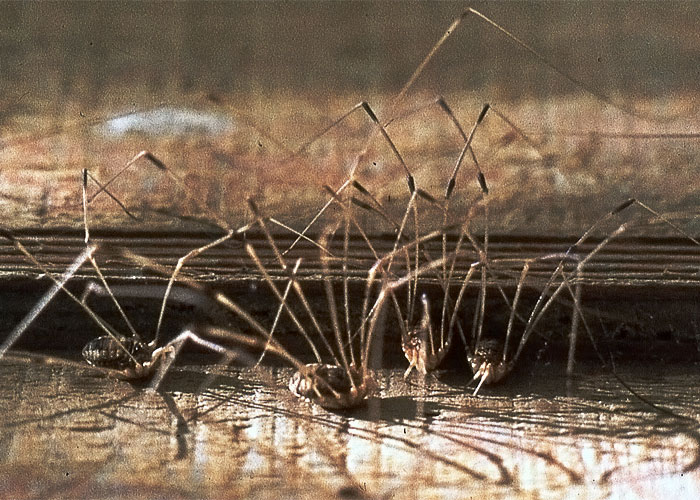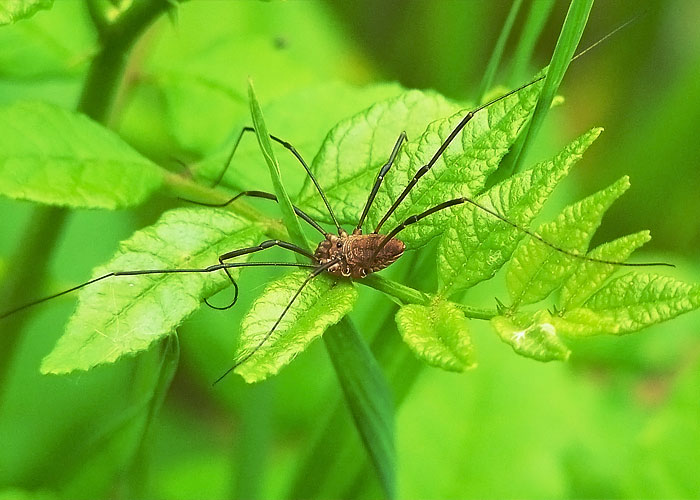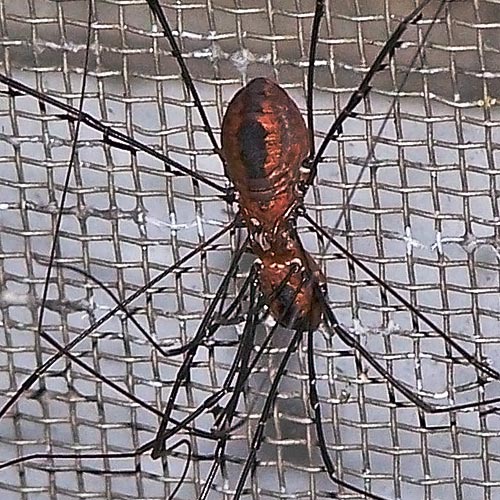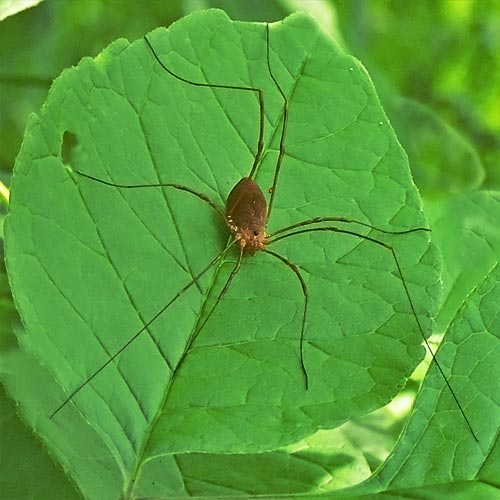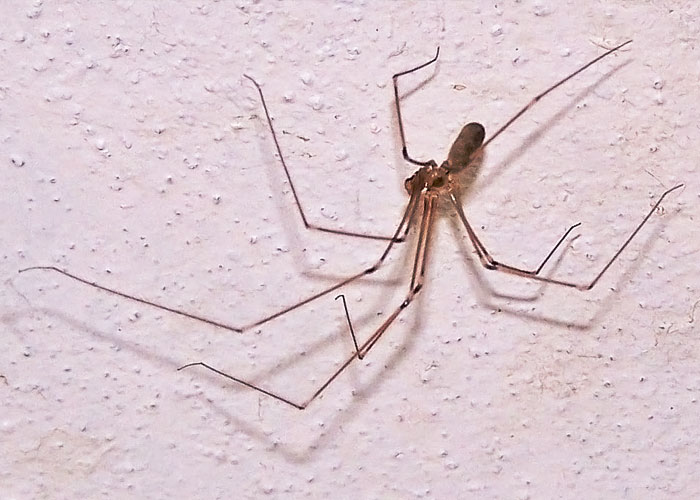Howdy, BugFans,
Daddy Longlegs
Daddy longlegs, a.k.a. Harvestman, (because they are numerous around harvest time) are in the phylum Arthropoda (jointed legs), which consists of the Crustacean, the Insect and the Arachnid Classes and, according to one author, accounts for about 80% of living “creatures” (his word). Since beetles are arthropods and every 5th living thing is a beetle, we’re in the right ballpark. Don’t let the eight legs and the spider-like appearance fool you; Daddy longlegs are not true spiders. Under the big umbrella of class Arachnida, they belong in the order Opiliones, not with the true spiders in the order Araneae, (and there are nice, Greek myths about Ariadne and Arachne, which The Bug Lady trusts you will look up on your own).
They have two body segments, a cephalothorax (fused head and body) and an abdomen. The daddy longlegs’ waist is broad, leading one author to say it resembles a rice krispies on legs. They “hear” via vibrations. Their eyes are on short stalks that look like antennae (which arachnids don’t have); their eyesight is poor. The senses of taste, touch and smell are incorporated in the longer, second pair of their four pairs of legs. Daddy longlegs clean themselves often, paying special attention to these legs. They can shed legs to escape predators but, unlike other arthropods, cannot regenerate them, and if they lose both of the sensory legs, they’re toast. And, despite their long legs, they carry their bodies close to the ground.
Males are smaller-bodied and brighter-colored. Harvestmen may congregate in large numbers in fall, which is thought to be a warming strategy. They are found in fields and meadows, both nocturnally and on bright days. Up to 40 pale green eggs are laid underground in fall, through a long ovipositor. Head-of-a-pin-sized young hatch in spring, live one summer, mate, lay eggs and die. They produce neither web nor nest.
Harvestmen are predators, eating insect eggs, small insects like aphids and springtails and critters as large as snails and earthworms. Some scavenge dead or decaying matter. Lacking the venomous fangs of true spiders, the Harvestman hunts for soft-bodied prey which it squeezes with its pincers and then stuffs into its mouth. Please note, boys and girls—“Lacking the venomous fangs of true spiders” means that Daddy Longlegs “do not bite.” They do not have fanged mouthparts and They! Do! Not! Bite!! They do produce a noxious odor as a defense (undetectable to humans, except those who get really up close and personal). Phalangiists claim they can distinguish species by their odor (Phalangiists – Scientists who work with daddy longlegs. In the family Phalangiidae. What did you think The BugLady meant?) (OK, The BugLady may have made up that word).
The BugLady sometimes sees a daddy longlegs with its body resting flat on a leaf and its legs dangling over the sides, but she has no clue why it does that. She also has a slide of a shed skin of a daddy longlegs—the critter simply pulled itself out of a slit on the back and walked away, leaving empty legs and an empty body, intact.
The pair in of daddy longlegs on the screen were photographed, “lip-locked” one night in late summer. About nine voyeur daddy longlegs were nearby on the screen, taking in the action.
Relatively little is known about Harvestmen. Why? Because although they are beneficial in gardens, they are neither crop pests nor disease vectors, so when research funds are handed out, Phalangiists get bumped to the end of the line. Jonathan Swift said “a flea hath smaller fleas that on him prey,” (the curse of a liberal arts education). Notice the spot of red on the back leg on your right (no, the Harvestman’s back leg). It is a tiny mite, which fills the same niche as a mosquito or tick does on larger organisms. The Bug Lady always wonders what she would see if she could photograph the mite’s leg.
Long-bellied Cellar Spider
The Long-bellied Cellar spider (Pholcus phalangoides) is a true spider and common household resident that is often mistaken for a harvestman because of its long legs and similar size—in fact, a common name of these cellar spiders is “Daddy Long-legs Spiders” and its scientific name also alludes to that fact. When alarmed, they may shake or pump up and down so rapidly that both web and spider become a blur, confusing predators (but not, alas, the BugLady and her vacuum cleaner).
Folklore—Harvestmen point in the direction of cows. Around here, they’re right.
The BugLady
